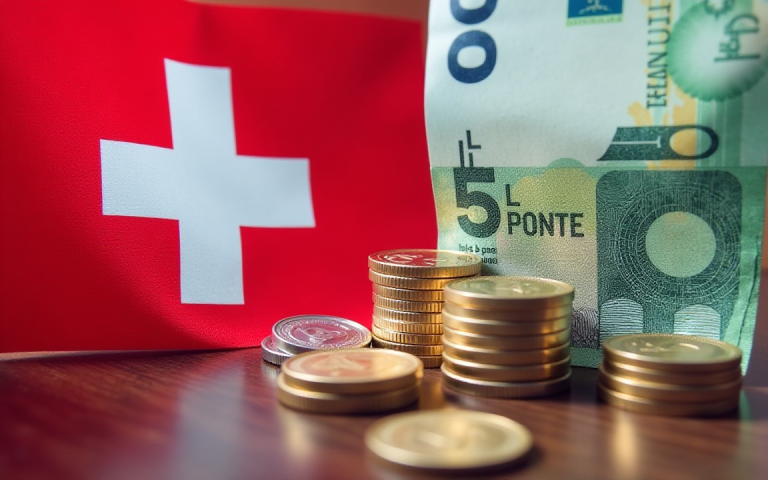The Switzerland National Bank (SNB) cut interest rates by 25 basis points to 0% on Thursday, deepening its dovish stance amid renewed concerns over deflation and persistent strength in the Swiss franc.
The widely anticipated move raises the possibility of Switzerland revisiting negative interest rates for the first time since 2022.
“With today’s easing of our monetary policy, we are countering the lower inflationary pressure,” President Martin Schlegel said in Zurich.
“We will continue to monitor the situation closely and adjust our monetary policy if necessary” he said, adding that “we remain willing to be active in the foreign exchange market as necessary.”
Why is Switzerland facing deflation?
While most global central banks remain focused on taming inflation, Switzerland stands apart.
Consumer prices in the country fell by 0.1% year-on-year in May due to persistent disinflationary forces.
The SNB is now trying to curb a deflationary cycle that has plagued the economy in past decades.
The appreciation of the Swiss franc has been a key driver of these deflationary trends.
Often seen as a safe-haven currency, the franc tends to gain during periods of global economic or political uncertainty.
That in turn makes imports cheaper, dragging down the consumer price index in a country heavily reliant on foreign goods.
“As a safe-haven currency, the Swiss franc tends to appreciate when there is stress on world markets,” said Charlotte de Montpellier, senior economist at ING.
This systematically pushes down the price of imported products. Switzerland is a small, open economy, and imports account for a large proportion of CPI inflation.
SNB sets itself apart from global peers
The SNB’s rate cut stands in contrast to the more cautious tone adopted by other major central banks.
On Wednesday, the US Federal Reserve left interest rates unchanged, and the Bank of England was expected to follow suit.
The European Central Bank, having recently cut rates, has also signalled a pause.
By lowering its benchmark rate to zero, the SNB now holds the lowest policy rate among major developed economies.
This places Swiss banks under renewed pressure, as income from customer deposits vanishes and lending margins shrink.
The SNB is also testing an interest rate level it has never used before—neither during its descent into negative territory in 2014 nor during its exit in 2022.
Economists say this could mark a transitional phase ahead of a deeper dive below zero.
Will Switzerland return to negative interest rates?
Martin Schlegel acknowledged that the new policy rate brings borrowing costs “to the verge of negative territory,” and warned of the potential side effects such a move could bring.
“We are also aware that negative interest can have undesirable side effects and presents challenges for many economic agents,” he said.
Economists at ODDO BHF forecast another 25 basis point cut as early as September.
“The return of negative rates aims to curb the appreciation of the Swiss franc and boost domestic credit,” the firm said, adding that the SNB may reintroduce exemption mechanisms to shield domestic banks.
Some analysts even see the potential for deeper cuts.
Adrian Prettejohn, Europe economist at Capital Economics, told CNBC ahead of Thursday’s interest rate decision that he expects rates to be cut to -0.25% this year, but noted that the SNB could go even lower.
There are risks that the SNB will go further in the future if inflationary pressures don’t start to increase, and the lowest the policy rate could go is -0.75%, the rate it reached in the 2010s.
Currency market interventions are also back on the table. While the SNB avoided such moves in 2023, it remains under scrutiny.
Earlier this month, the US Treasury added Switzerland to its watchlist of economies for foreign exchange practices, warning against currency manipulation—a charge previously leveled during Donald Trump’s first term.
Inflation forecasts revised down as risks linger
Adding to the dovish tone, the SNB lowered its inflation projections across the board.
It now expects inflation to average just 0.2% in 2025, 0.5% in 2026, and 0.7% in 2027—revised down from earlier forecasts of 0.4%, 0.8%, and 0.8% respectively.
While recent increases in oil prices, driven by tensions between Israel and Iran, could provide some near-term relief, the broader outlook remains weak.
Switzerland’s unusually strong currency, muted consumer demand, and fragile global trade suggest that price pressures will stay low for the foreseeable future.
The post Switzerland cuts rates to zero: are negative interest rates coming back? appeared first on Invezz

